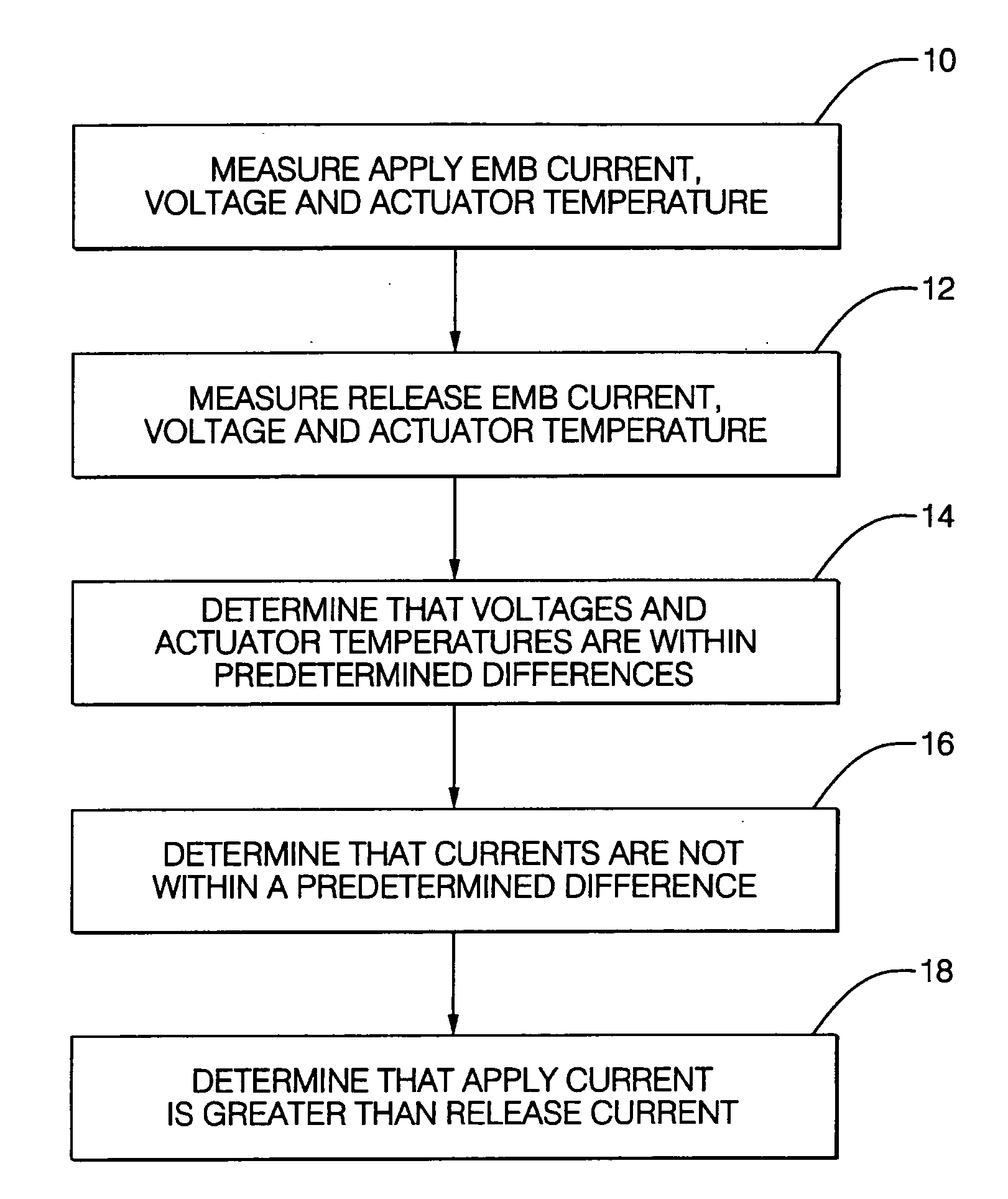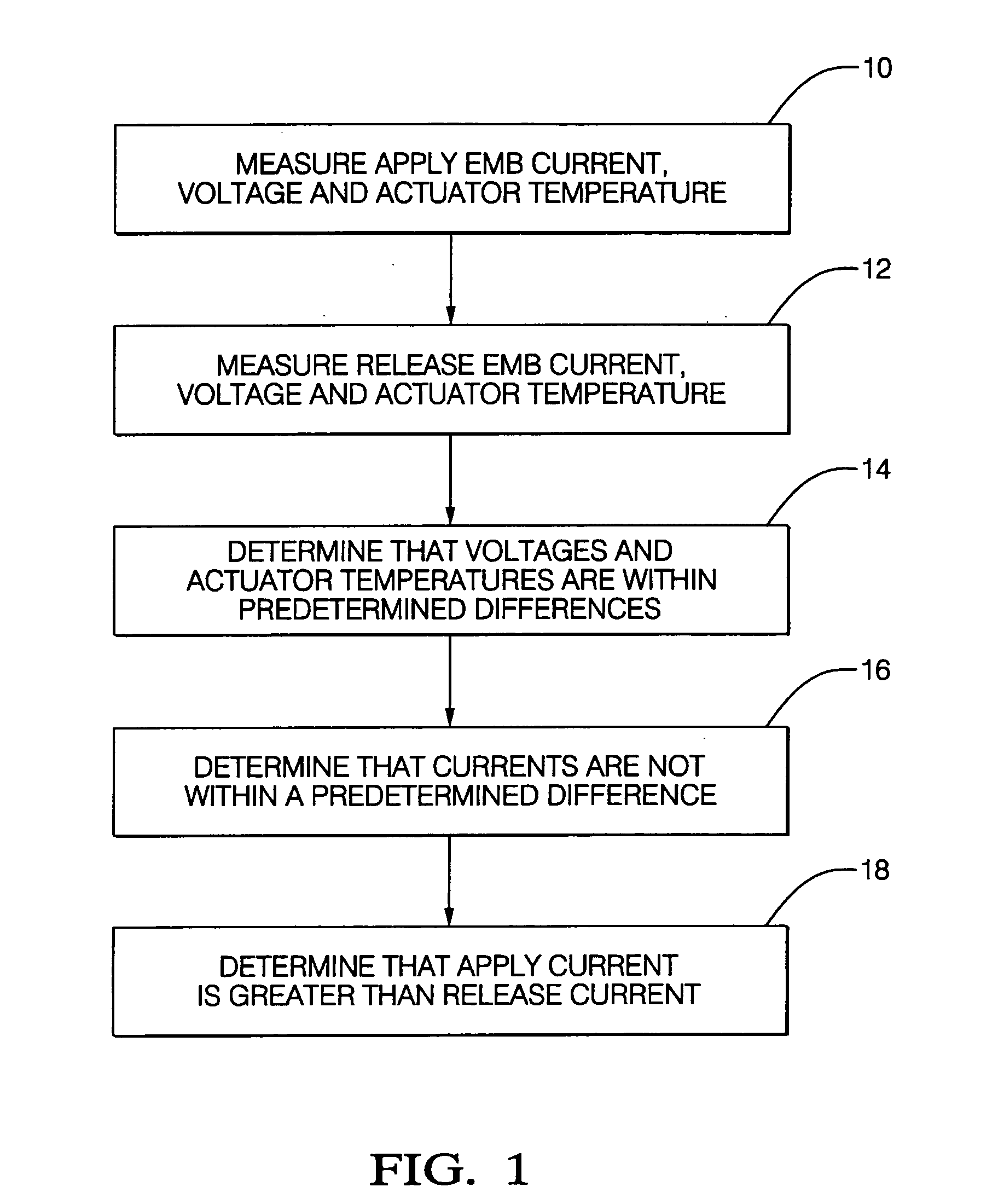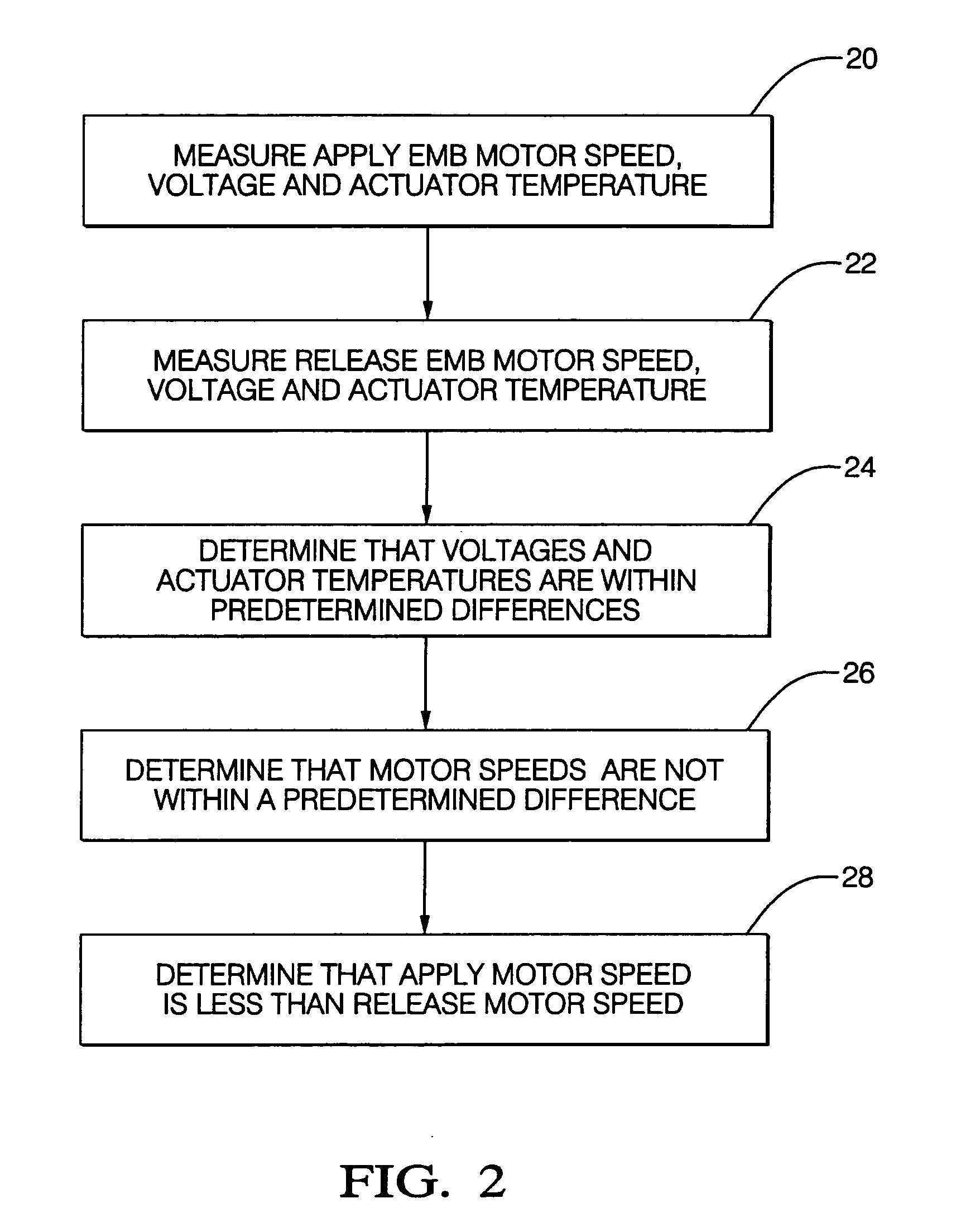Method for detecting electric-mechanical-brake pad drag and/or calculating actuator efficiency
a technology of actuator efficiency and emb pad drag, which is applied in the field of electric mechanical brake, can solve problems such as undesirable conditions in the description of the emb pad drag
- Summary
- Abstract
- Description
- Claims
- Application Information
AI Technical Summary
Benefits of technology
Problems solved by technology
Method used
Image
Examples
Embodiment Construction
[0014] Referring now to the drawings, FIG. 1 shows a first method of the invention which is for detecting electric-mechanical-brake (EMB) pad drag and which includes steps a) through e). Step a) is labeled as “Measure Apply EMB Current, Voltage And Actuator Temperature” in block 10 of FIG. 1. Step a) includes measuring an apply EMB current, an apply EMB voltage, and an apply EMB actuator temperature during an open-loop apply of the EMB pad. Step b) is labeled as “Measure Release EMB Current, Voltage And Actuator Temperature” in block 12 of FIG. 1. Step b) includes measuring a release EMB current, a release EMB voltage, and a release EMB actuator temperature during an open-loop release of the EMB pad. Step c) is labeled as “Determine That Voltages And Actuator Temperatures Are Within Predetermined Differences” in block 14 of FIG. 1. Step c) includes determining that the apply and release EMB voltage magnitudes are within a predetermined voltage difference and that the apply and relea...
PUM
 Login to View More
Login to View More Abstract
Description
Claims
Application Information
 Login to View More
Login to View More - R&D
- Intellectual Property
- Life Sciences
- Materials
- Tech Scout
- Unparalleled Data Quality
- Higher Quality Content
- 60% Fewer Hallucinations
Browse by: Latest US Patents, China's latest patents, Technical Efficacy Thesaurus, Application Domain, Technology Topic, Popular Technical Reports.
© 2025 PatSnap. All rights reserved.Legal|Privacy policy|Modern Slavery Act Transparency Statement|Sitemap|About US| Contact US: help@patsnap.com



